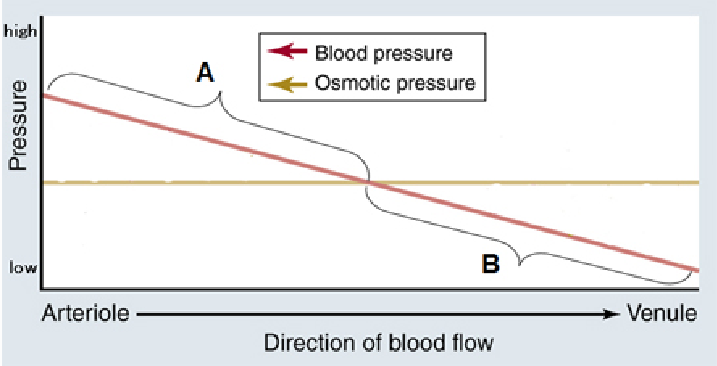Which process is most directly driven by light energy?
A) creation of a pH gradient by pumping protons across the thylakoid membrane
B) carbon fixation in the stroma
C) reduction of NADP+ molecules
D) removal of electrons from chlorophyll molecules
E) ATP synthesis
Answer: D
You might also like to view...
How does the male gametophyte travel to the female gametophyte of the conifers?
a. insects b. self-pollination c. birds d. wind
The graph below can be used to understand the forces underlying the movement of fluid between the blood and the interstitial fluid. What is a true statement concerning these processes?

A. Normally, the net amount of fluid flow in region A is less than the net amount of fluid flow in region B.
B. Sodium ions contribute significantly to the movement of fluid in region B.
C. Fluid leaves the blood in region A and returns to the blood in region B.
D. In people suffering from severe liver disease or protein starvation, the fluid flow in region B is increased.
E. Edema results from reduction of fluid flow in region A.
Clarify Question
What is the key concept addressed by the question?
What type of thinking is required?
Gather Content
What do you already know about the movement of materials in and out of the circulatory system? What other information is related to the question?
Choose Answer
Given what you now know, what information is most likely to produce the correct answer?
Reflect on Process
Did your problem-solving process lead you to the correct answer? If not, where did the process break down or lead you astray? How can you revise your approach to produce a more desirable result?
How much mercury can the average human safely consume per day?
a. 2 micrograms b. 7 micrograms c. 12 micrograms d. 55 micrograms e. 90 micrograms
Two parents have the genotype Gg for a genetic disorder caused by a dominant allele. What is the chance that any of their children will inherit the disorder?
A.) 25% B.) 50% C.) 75% D.) 100%